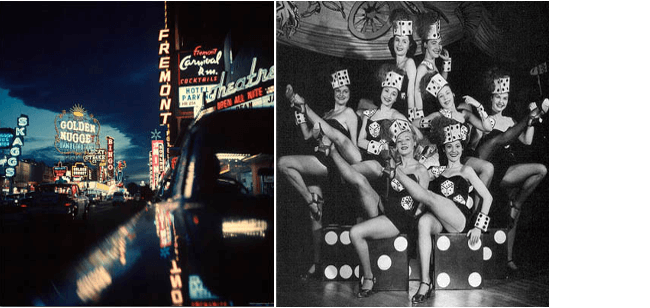Gambling has been a pastime present throughout history for centuries. It has taken up different forms depending on the culture and society that embraced it at the time. Whether one was simply throwing dice to obtain the highest number, playing a few hands of cards or even betting on turtles racing or on which gladiator would win a fight, gambling has survived the test of time and evolved many times.
In order to see how history has led to the current state of casinos, and now even online casinos, we need to take a trip through history.
Gambling Emerges
The earliest evidence we have of gambling dates back to ancient China at about 2300BC. Tiles depicting people enjoying gambling activities were found. Later on, in the year 1500BC, records show that dice were used by the Egyptians. Despite the information available, the actual date when gambling was born is still unclear. What we know, however, is when the first casino surfaced.
Until 1638, there had not been any legitimate premise designated for gambling. While gambling dens, halls, saloons and other similar venues existed, none of these was official. This changed until the local council of Venice opened the Casino di Venezia, which would remain active during carnival for players to enjoy unhindered gambling.
However, the word “casino” was first coined and applied in certain locations in Germany and with the birth of the famous Monte Carlo Casino in the 18th and 19th centuries. The extravagant premises welcomed mainly elite gamblers.
Things took longer, however, to develop in the U.S. Until Las Vegas surfaced as a major gambling mecca, there wasn’t much more than old saloon bars that housed gambling bouts.
Las Vegas’ First Lights
One can’t help but wonder how such a shiny and crowded metropolis such as Las Vegas has come to be in the middle of a sandy desert. Well, it all began in around 1905, when railroad tracks were being laid to connect Vegas with Pacific Coastline as well as Los Angeles and Salt Lake City. The workers toiling away at the construction sites decided to set up sites where they could get some respite from working under the scorching sun. This soon degenerated into places rife with gambling, alcohol and prostitution, and soon after, the authorities brought it to an end.
Despite gambling being outlawed in Nevada between 1910 and 1931, an era that came to be known as The Prohibition Era, gamblers carried out most of their activities underground. And by the time authorities lifted the ban on casinos, the whole underground gambling scene had already grown notoriously, and so did associated criminal activities grow.
The Golden Gate was the first casino to be built in Las Vegas. However, the El Rancho Vegas was the first real resort, which surfaced in 1941. This featured amenities such as swimming pools, horse riding facilities, and several casino games. This became the role-model for several other complexes on The Strip that followed.
Las Vegas and the Mob
After World War 2, Las Vegas flourished into a fully-fledged casino complex mecca, and it wasn’t long until the mob set their eyes on it. This officially happened when the notorious Bugsy Siegel set up his own resort — the Flamingo — in 1946. The construction of this resort was backed up by the drug money of the East Coast gangster Meyer Lansky. As a result, this outdid the El Rancho in extravagance and style. Soon after, however, things went south. It turned out that Siegel had stolen a lot of money from the Union that was controlled by the Mafia in an attempt to speed up the process as he had been pressured into building it by the mafia bosses. And when things took a financial dip at the resort, Siegel was to face the consequences.
After Siegel’s assassination in 1947, the money trickling down from his operations helped Vegas shape up into the gambling capital of the world. Many Mafia families moved in, and as they built casino complexes, they started buying shares in each other’s operations. Las Vegas truly became a Mafia haven.
Big names in the entertainment business such as Elvis Presley and Frank Sinatra were invited over by the mafia, and by the mid-1950s, about 8 million tourists drifted toward Las Vegas on a yearly basis.
From the Mob to Mega Complexes
Control over Las Vegas started shifting away from the Mafia to multitasking tycoons such as Howard Hughes. He entered on scene with a bang when he checked in at the Desert Inn, and instead of checking out, he bought the hotel. That was just the first piece on the chessboard, and what followed was him investing $300 million in several hallmark names on the strip. Corporate commercialism was the next new collective proprietor in Las Vegas.
This change of ownership brought with it new direction. The Mirage Hotel and Casino became the first mega-resort and ti was the first in a series to follow. Nowadays, several architectural works of art inspired by great, ancient civilisations occupy the strip.

